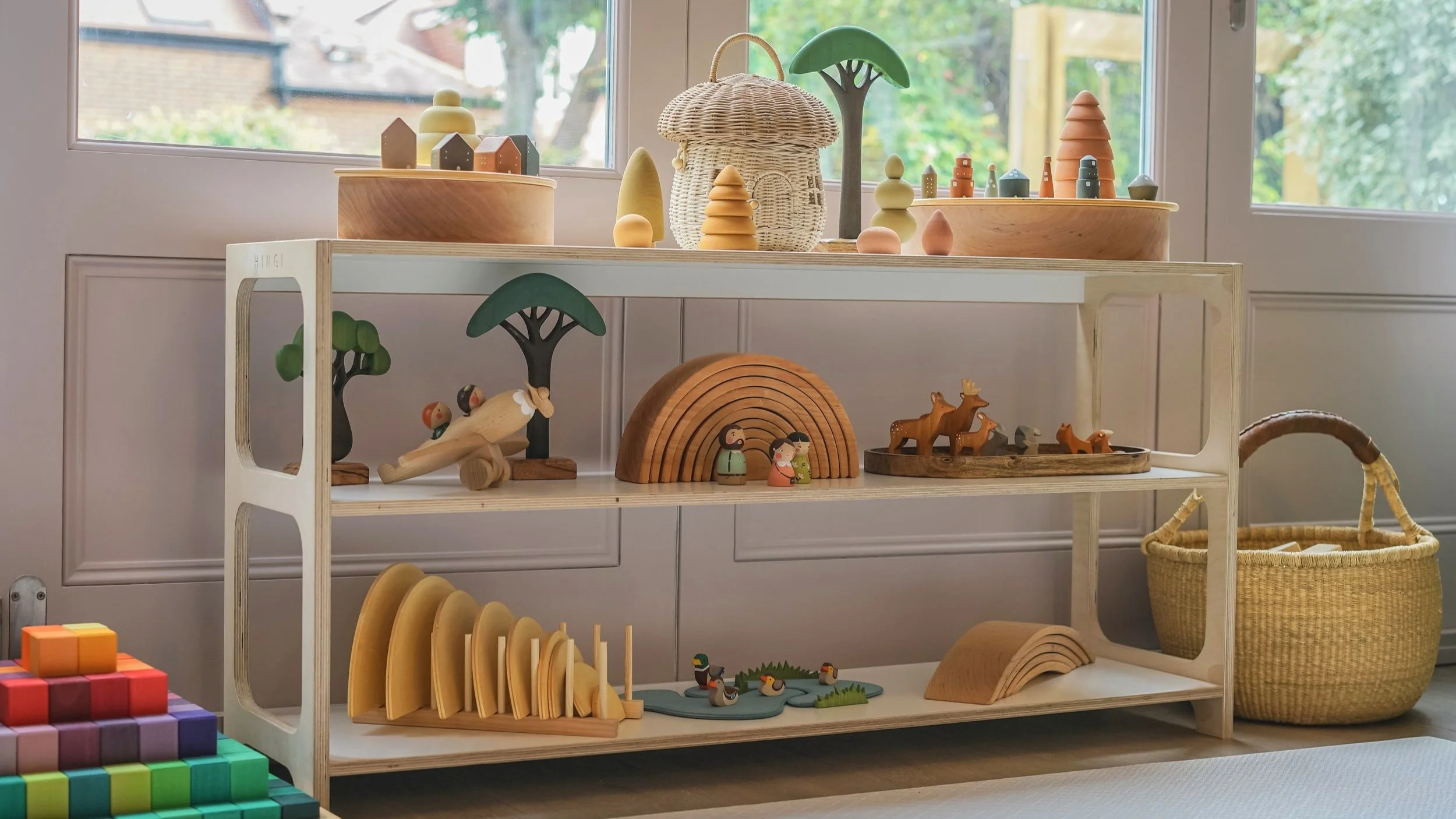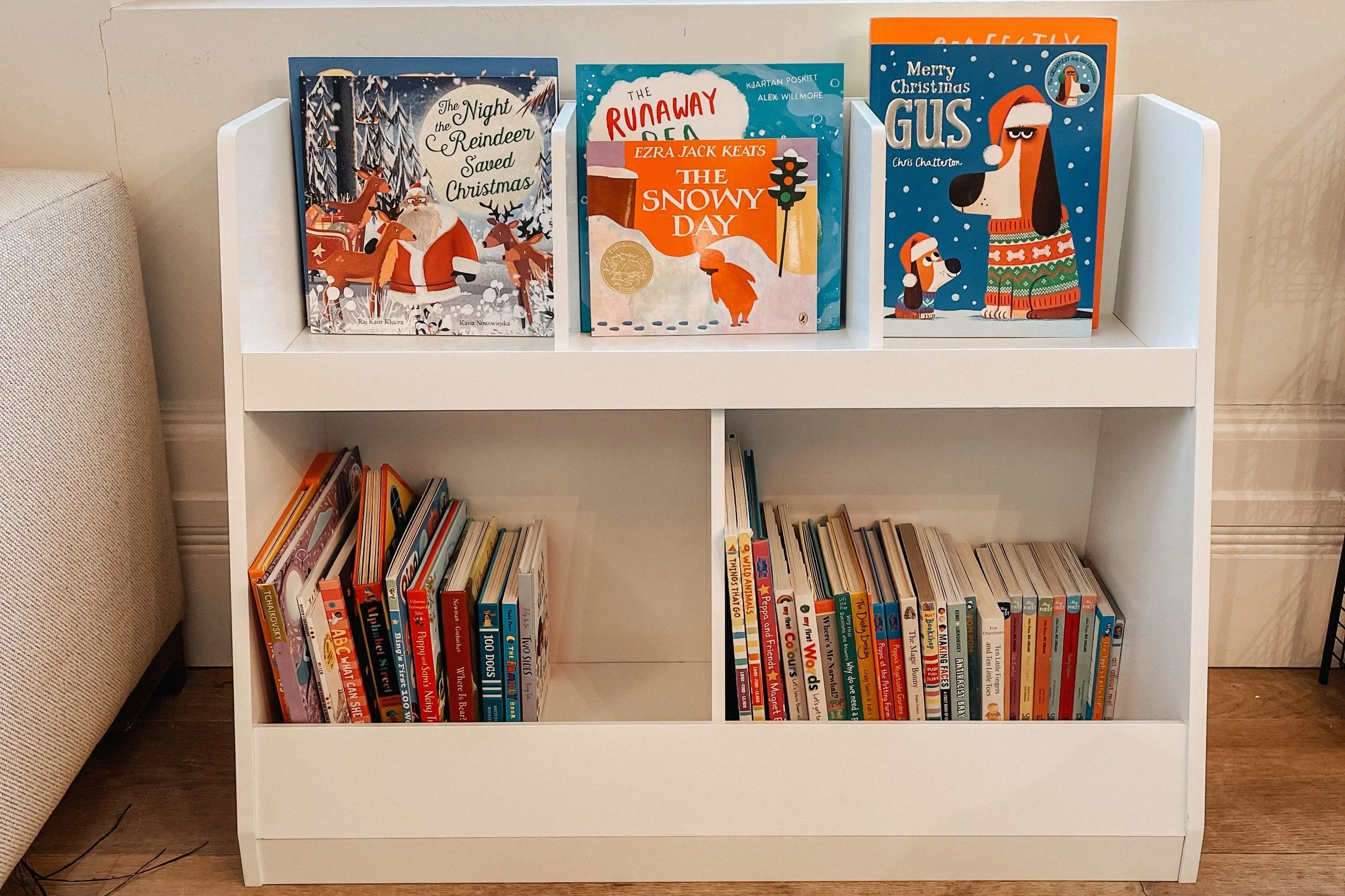How To Set Up Your Play Space
Whether you have a designated playroom or a number of satellite play spaces, the key to setting it up is to enable your child to be independent. This means that it should be set up in a way that is accessible and organized so it is easy for them to find things. Their independence will gain you your independence!
Where?
The first decision to make is where set up your play space.
We have had a number of play spaces over the years, and we found that no matter how beautiful it looks and how much space there is, our kids only want to play where we were. In our last configuration, we had a play space in the living room where there was more space for larger items, and we had another smaller space next to the kitchen.
Shelving
Open shelving is great for displaying and presenting toys so that your child can see everything there is on offer to play with. When organising, your shelves, use small baskets and trays to group loose items. This will allow your child to access their toys independently without having to ask you for help to reach them.
Try not to put items in closed containers, if they can’t see them, they won’t think to play with them.
We have an open shelf fron Hingi, and they also have other great designs.
Wood and Room has a taller narrower unit that would work well in smaller spaces.
Lovevery has a great Play Shelf that also has built-in storage at the back for some out of rotation toys.
Storage
After a few years it is inevitable that you will end up with bits that need storage whether it is train tracks, lego pieces or magnetic tiles. The Ikea Trofast system can be really good for storing lots of the same type of item, and you can get nice wooden labels for them.
Playmats
Having a soft surface to play on really helps to make it more comfortable and inviting. It is also a good way to delineate a play zone so that toys don’t just spread out everywhere. Having a playmat also ensures that there is enough space for open ended play.
I wouldn’t recommend anything too soft as constructing things on soft surfaces can be more difficult. Also to keep in mind – babies love pulling apart the puzzle piece type mats, but like everything else it is just a phase.
For bigger kids
Our play mat is from Totter & Tumble. They come in different sizes to suit your space and are made from non-toxic PVC memory foam. They come with two different designs on each side so you can change things up for a fresh feel.
Jigsaw mat
Jigsaw mats are the ones to go for if you are looking to cover a specific area and the standard playmat sizes just don’t work. Gus & Beau playmats come in tiles that are much larger than normal playmat tiles so there are less seams. They are 60 x 60cm each and are made of non-toxic EVA foam.
Table and chairs
A kid sized table and chairs are great for independence, and it’s much more comfortable for little ones. We have the Ikea Flisat table and we use it for doing activities, puzzles, small world setups, arts & crafts, snacking and for sensory play.
Top tip – if you are using it for art and you have young children, I would recommend positioning it away from the walls. You are bound to step away at some point and the temptation to draw on walls can be great! Washable paint can be a life saver for this reason, as well as only using water soluble paints and markers.
Art corner
I feel like there are two camps – those who give their children free reign of the arts supplies and those who do not. Our daughter only ever made one mark on the wall when she was 23 months old, but it was enough to put fear in my heart. She did not have her own full access art trolley until she was 4, when she was old enough to climb on furniture to help herself to whatever she wanted anyway.
We did, however, always keep playdough accessible, and we would take out the art supplies whenever she would ask for them. It just made us feel more comfortable knowing when she was using them so we could keep an extra eye out.
Bookshelf & Reading area
It’s lovely to have a reading nook, however it is certainly not a requirement. Having an accessible bookshelf where they can easily see their books will hopefully help keep their interest in books at the forefront.
The Montessori bookshelves that have the books facing out are a great option, a Wall Mounted Montessori Book Shelf would work well in smaller spaces.
I also love the idea of a portable bookcase. I particularly love this Portable Scalloped Montessori Bookcase.
We have books in the main living space and in the bedroom. With both bookshelves we were looking for volume. We were worried about the stability of the kids bookshelf with a toddler running around so we kept the legs off and sat it directly on the floor. We use it with some books facing sideways and some books facing out.
We also have the Raffy Bookcase which rotates and is great for fitting in lots and lots of books within a small footprint.
Imaginative play corner
It’s always nice to have an imaginative play corner. There are so many benefits including language skills, social skills and understanding the world.
Whether you have a kitchen or a shop, storage for play food is always needed. A tiered bathroom caddy works well for this.
For dress up you can use a peg rail on the wall or if you have enough space and an extensive collection, you can use a clothes rail and a basket for accessories.
Gross Motor
You don’t need to have gross motor toys out all the time, as long as there is enough clear floor space it is something you should be able to set up for periods and put away.
*This post contains affiliate links. We may earn a small commission when you make a purchase through links at no additional cost to you.









